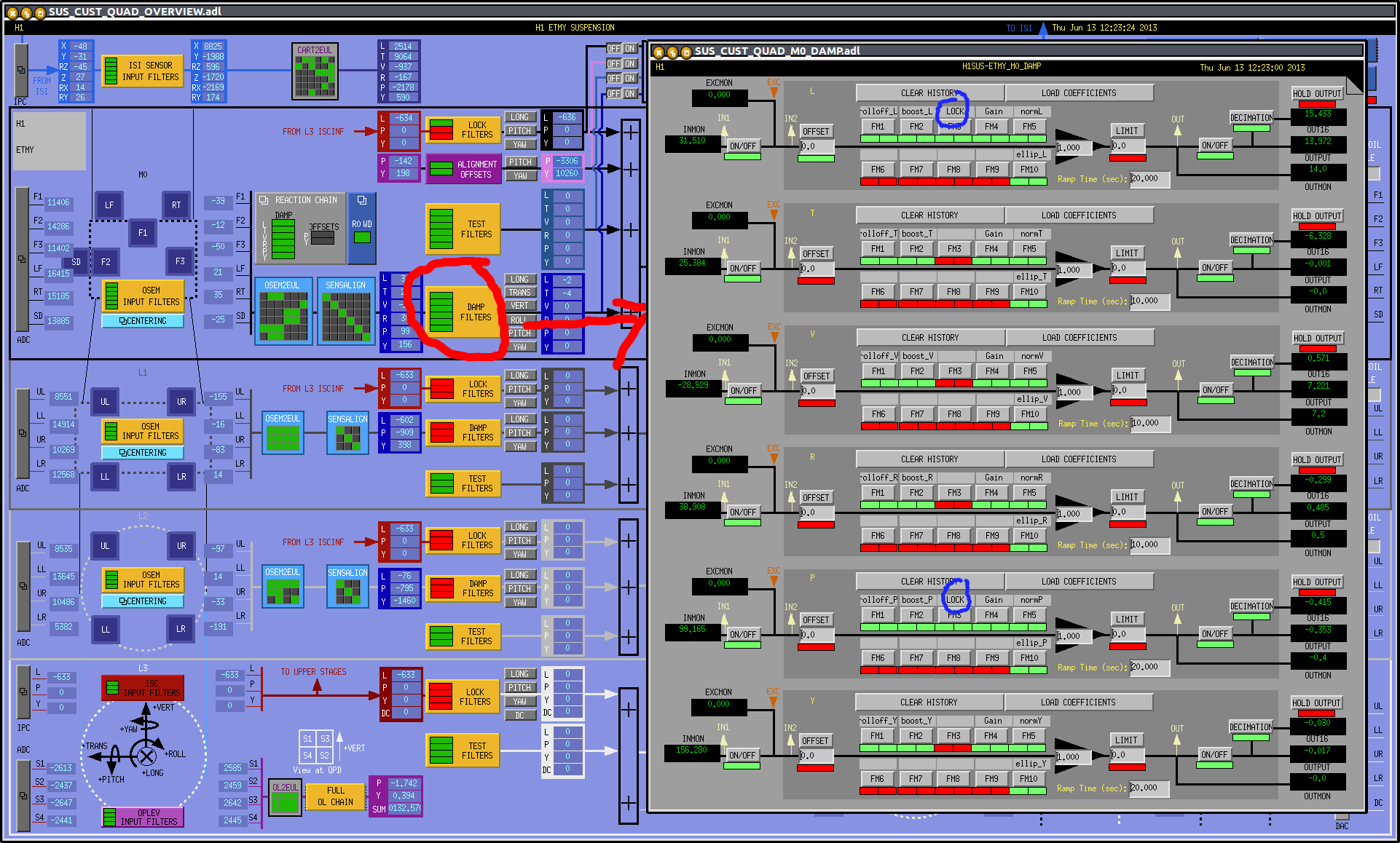arnaud.pele@LIGO.ORG - posted 15:25, Thursday 13 June 2013 - last comment - 11:09, Friday 14 June 2013(6738)
SUS etmy new filters
In order to reduce the motion of the quads at low frequency, I added resonnant gain filters called "LOCK" to the medm filterbank of etmy and itmy. Those filters are designed to help locking the cavity, damping the 0.43Hz and 0.99Hz resonnances of the first longitudinal modes and 0.56Hz of the first pitch mode. The stability of the closed loop hasn't been studied yet, but it looks to be working fine for now. The second and third pictures attached are showing the shape of the damping filters with and without the "LOCK" filter engaged. Those filters are engaged with a ramping time of 10sec.

Images attached to this report
Comments related to this report
In Foton :
longitudinal "LOCK" filter = resgain(0.43,2,10)*resgain(1,2,10)
pitch "LOCK" filter = resgain(0.56,2,10)
J. Kissel, A. Pele I've modeled the effect of adding these resonant-gain boost filters on the ETM, and the results are ... interesting. For Pitch, whose design figure of merit is shown in dampingfilters_QUAD_2013-06-14_Level2p1_loopdesign_P.pdf the boost filter only does good. In the 2013-05-01 design, there was plenty of phase margin at low frequency, and the boost was pretty weaksauce. With this boost increase (the previous boost was also at 0.56 Hz), there is still oodles of phase margin on both sides. We shall keep it. For Longitudinal, dampingfilters_QUAD_2013-06-14_Level2p1_loopdesign_L.pdf the situation is a little more dicey. According to the model, with these two new boost filters at 0.43 and 0.56 [Hz], the loop in now only *conditionally* stable, and the phase margin at the last upper unity gain crossing has diminished to 19 [deg]. Assuming that stable locking of the cavity *needs* this level of damping on the lowest two modes, I'll go back the model and look into a redesign that regains unconditional stability and a reasonable phase margin, while continuing to squash these lowest modes. I attach the previous two designs without these boosts for comparison: dampingfilters_QUAD_2013-05-01_loopdesign_L.pdf dampingfilters_QUAD_2013-05-01_loopdesign_P.pdf I've discussed the current implementation with Arnaud, and a couple of other details came up in the discussion. (1) The intent for this additional LOCK filter was that it only be used during lock acquisition, and to be turned off once lock is acquired. As such, the filter has a 10 s ramp on it. It is still yet-to-be tested whether, once lock is acquired, the filter can be turned off, and the QUADs don't ring up again at these frequencies due to ambient excitations. Regardless of this original design intent, I'm going to try and design a filter set than can be left on at all times. I think it's doable. (2) ONLY the ETM has the extra resgain(1,2,10) filter, because when Arnaud tried this on the ITM the loops went unstable. My guess is that this is because the ITM is still a "wirerehang," and so his resonances are different enough that the open loop gain had instabilities. I'll also look into this. Finally, I'll use Vincent's recent 2013-05-14 data as my BSC-ISI ST2 input, instead of Matt's model to assess the overall performance.
Non-image files attached to this comment



